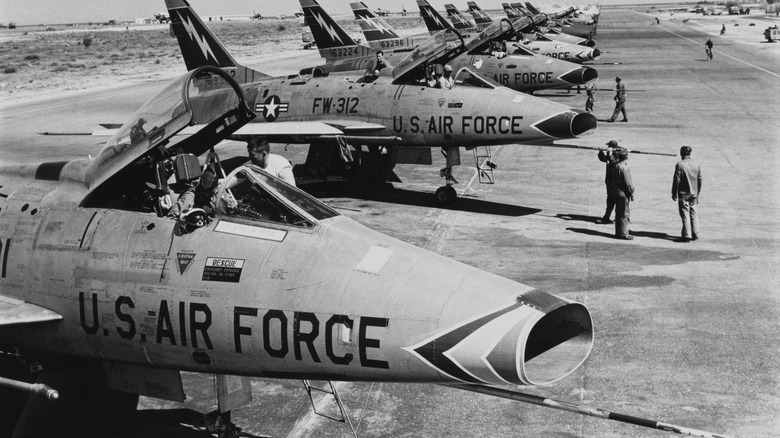Building an operational supersonic jet engine was no less than a technological marvel. It served as a stepping stone to the skies but also ushered in a new generation of fighter aircraft. Prior to the Vietnam War, most of the legendary planes flown by the U.S. military used prop engines. That changed in 1953 when the YF-100A prototype took its first flight. The North American Aircraft Company liked the performance of the F-86 Sabre and how it owned the skies during the Korean War so much that it followed it on with the world’s first supersonic jet; the F-100 Super Sabre.
Advertisement
The North American Aircraft Company produced 2,294 F-100s and of those, 1,274 were F-100Ds, the most advanced and favored iteration of the aircraft. It came with a supersonic autopilot. The first F-100D flew in January of 1956 and deliveries to the Air Force started in fall of the same year.
The U.S. used the F-100D for ground support, taking out bridges and other valuable targets. While the Super Sabre just barely broke the sound barrier, it paved the way for other fighter jets capable of flying twice as fast as the speed of sound and other planes exceeding Mach 3. The F-100D Super Sabre crawled to fighter jets today can run.
Other countries fought to keep up
The F-100D Super Sabre was built with a Pratt & Whitney J57-P-21 engine that produced 16,000 lbs. of thrust with the afterburner engaged. This gave it a maximum speed of 926.6 mph — faster than any fighter jet before it. During the earliest part of the Vietnam War, American pilots primarily had to worry about MiG-17s, which were drastically outdated compared to something like the Super Sabre. The MiG-17 was a subsonic aircraft that could only reach speeds of 715 mph. The speed of sound, for the uninitiated, is roughly 761 mph. Granted, speed isn’t everything in aerial combat, but it’s not nothing either. However, the MiG-17 was primarily armed with guns.
Advertisement
The MiG-17 could also drop bombs, but that didn’t do much for air-to-air combat. Despite primarily being air-to-ground, the F-100D, on the other hand, could launch air-to-air sidewinder missiles, outclassing the MiG. To mitigate losses, North Vietnamese forces would only attack enemy aircraft during the most ideal of conditions, including planes loaded for bombing missions, damaged planes, or jets low on fuel.
The MiG-21, the oldest fighter jet still in service, entering the Vietnam War in 1966 changed things up, though, and gave the U.S. a run for its money. Not only could the MiG-21 fly at supersonic speeds, faster than the F-100D, in fact, the Vietnamese could arm it with K-13 infrared homing air-to-air missiles, increasing its chances against American fighters.
Advertisement

